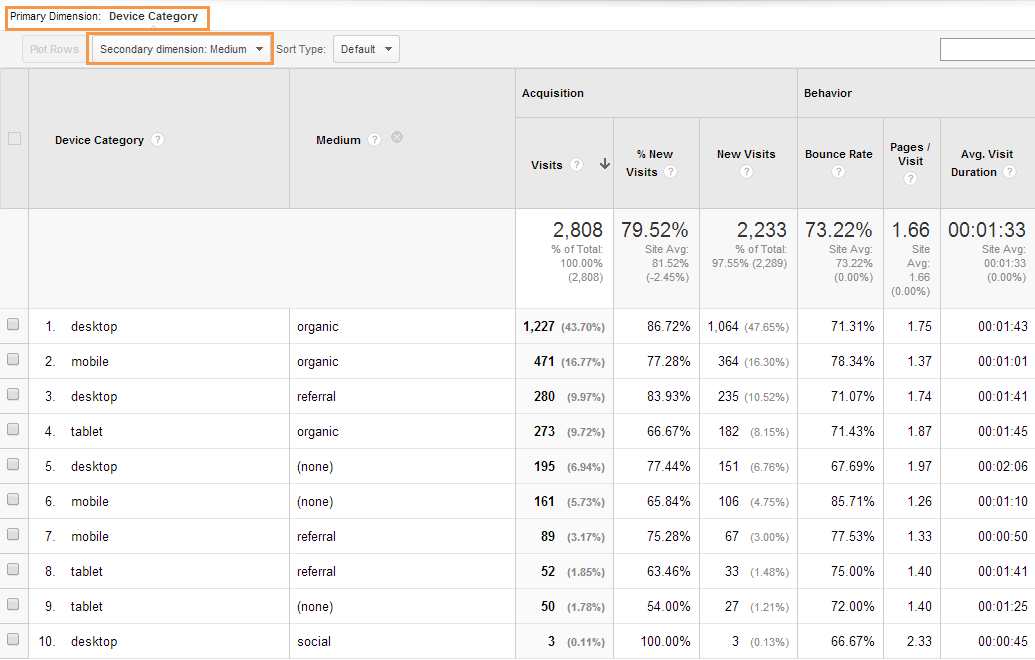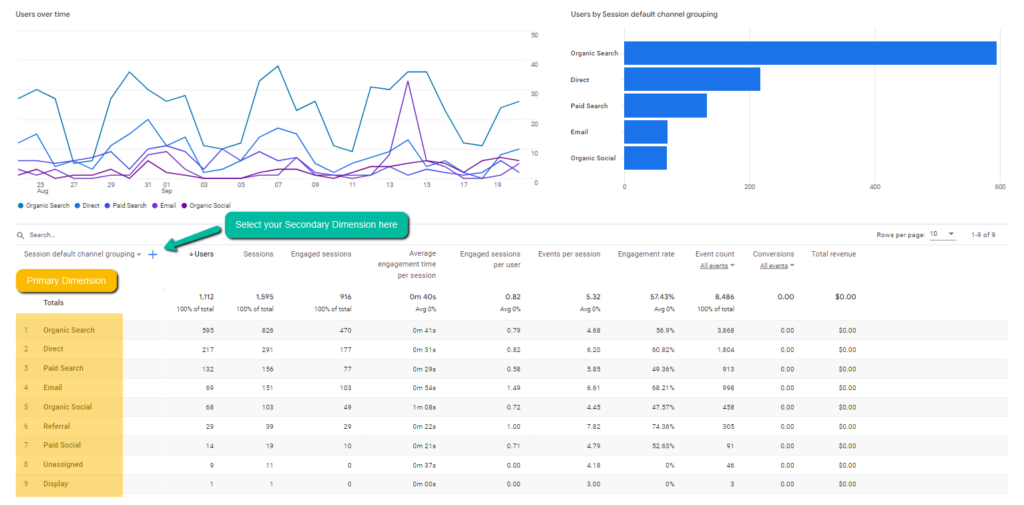Boost Your Information Evaluation with Secondary Dimension in Google Analytics
Boost Your Information Evaluation with Secondary Dimension in Google Analytics
Blog Article
Gain In-depth Point Of Views With Second Measurement in Google Analytics
Secondary measurements in Google Analytics act as a powerful device for improving the depth of insights derived from data evaluation. Keep tuned to discover how secondary dimensions can transform your data evaluation and drive educated decision-making in the digital world.
Comprehending Additional Dimensions in GA
The idea of secondary measurements in Google Analytics enhances information evaluation by providing extra insights into primary metrics. Additional dimensions allow users to dive much deeper right into their data by adding an additional layer of details to the primary data being analyzed. By including secondary measurements, customers can segment and compare data across different dimensions, such as website traffic resources, customer gadgets, geographical locations, and a lot more. This extra level of granularity allows a more thorough understanding of user habits and site performance.
Recognizing how to efficiently utilize secondary measurements in Google Analytics is important for extracting important insights from the information accumulated. By choosing the ideal second dimensions to enhance key metrics, customers can discover patterns, fads, and relationships that may have otherwise gone unnoticed. This deeper level of analysis can bring about even more enlightened decision-making and the optimization of electronic marketing techniques to improve general efficiency.
Advantages of Utilizing Secondary Dimensions
Exploring the advantages fundamental in leveraging secondary measurements within Google Analytics illuminates the deepness of insights available for boosting information analysis. By including secondary dimensions, customers can acquire a much more comprehensive understanding of their main information metrics.
Additionally, second dimensions allow users to compare and contrast various data points within the very same report, giving an extra holistic sight of internet site efficiency. This comparative analysis can lose light on the performance of advertising campaigns, web content engagement, or user demographics. In addition, the use of additional dimensions can aid in determining outliers or abnormalities that may call for additional investigation.
In essence, leveraging secondary dimensions in Google Analytics provides a powerful device for removing useful understandings and enhancing data-driven decision-making procedures.
Executing Secondary Measurements Effectively
To efficiently carry out second dimensions in Google Analytics, strategizing the selection and application of these additional data layers is critical for maximizing the deepness of insights originated from analytics records. When picking second dimensions, consider the specific goals of your evaluation to make sure the selected measurements align with the information needed to answer essential concerns. It's important to focus on significance over amount, choosing measurements that match the key measurement and give purposeful context.
Applying additional measurements properly entails using them to uncover patterns, fads, and correlations that may not be obvious when examining data entirely based on the primary dimension. By including second dimensions thoughtfully, you can boost the granularity of your evaluation and gain much deeper understandings into user behavior, material efficiency, and other essential metrics within Google Analytics.
Analyzing Data With Secondary Dimensions
Using additional dimensions in data analysis offers a nuanced perspective that reveals intricate connections and patterns within Google Analytics reports. By including additional dimensions alongside primary measurements, analysts can delve deeper into the data to draw out valuable understandings. This method makes it possible for the recognition of relationships that may not be instantly apparent when evaluating information solely based on main dimensions.
When examining data with secondary dimensions in Google Analytics, it is necessary to consider the certain metrics or measurements that will certainly give one of the most significant context for the key measurement being assessed. Combining the main dimension of 'web traffic resource' with secondary dimensions such as 'tool group' or 'touchdown web page' can use a much more comprehensive understanding of customer actions and choices.
Additionally, the ability to sector data making use of additional dimensions allows for an extra granular examination of user communications, assisting in the optimization of marketing techniques, web site efficiency, and total individual Source experience. By leveraging second dimensions successfully, businesses can make enlightened decisions based on a complete analysis of their Google Analytics data.
Ideal Practices for Additional Measurements
When implementing secondary dimensions in Google Analytics, precision in choosing appropriate metrics is paramount for deriving workable insights from the data evaluation process. Among the most effective techniques for utilizing additional measurements effectively is to align them with your primary dimension to get an extra thorough understanding of your site or campaign performance. If your main dimension is 'Source/Medium,' matching it with second dimensions like 'Gadget Group' or 'Touchdown Web page' can provide understandings into just how different tools or landing pages effect website traffic from different sources.

Frequently try out various combinations of additional and primary dimensions can aid you discover brand-new correlations and trends within your data, allowing you to optimize your techniques and improve overall efficiency (Secondary Dimension in Google Analytics). By complying with these best practices, you can utilize second dimensions in Google Analytics effectively to acquire deeper understandings and make data-driven decisions that favorably influence your service

Final Thought
Finally, secondary measurements in Google Analytics provide an important possibility to gain deeper understandings right into key information metrics. By including an additional measurement to records, organizations can uncover relationships, patterns, and patterns that might not be quickly obvious, leading to a more thorough understanding of individual behavior and interactions on an internet site. Applying additional measurements properly and examining information with them can assist businesses make data-driven choices and optimize their online performance.
By integrating secondary dimensions, individuals Recommended Site can sector and contrast data throughout various measurements, such as web traffic sources, user tools, geographic areas, and a lot more. Implementing view second measurements effectively includes using them to uncover patterns, trends, and relationships that might not be obvious when assessing information exclusively based on the primary dimension. By integrating second measurements together with primary measurements, experts can dig deeper into the information to draw out useful understandings. One of the finest practices for making use of additional dimensions properly is to straighten them with your key dimension to obtain an extra extensive understanding of your web site or campaign performance. If your key dimension is 'Source/Medium,' matching it with additional dimensions like 'Device Category' or 'Landing Page' can provide insights into exactly how different tools or touchdown pages effect web traffic from numerous sources.
Report this page